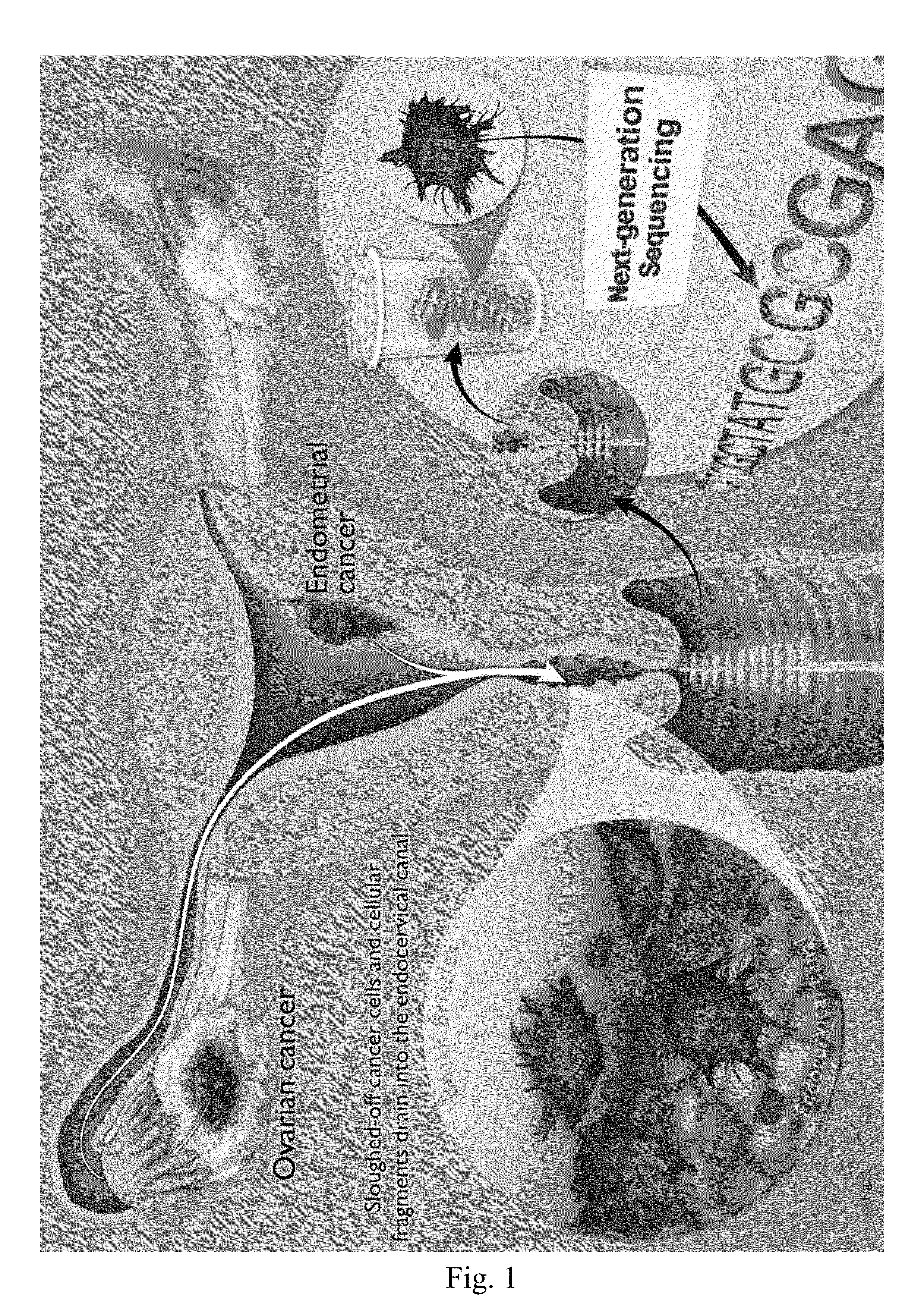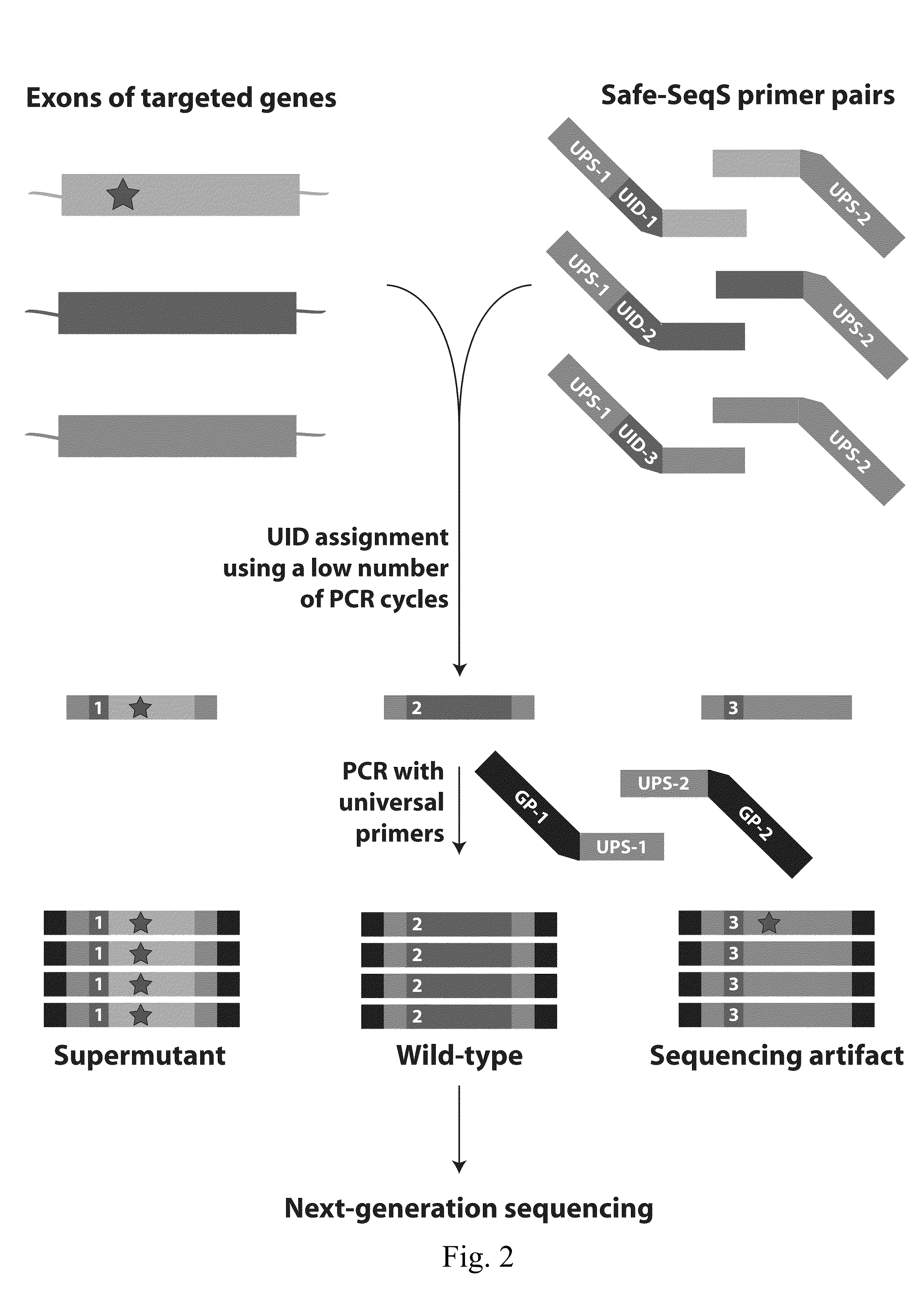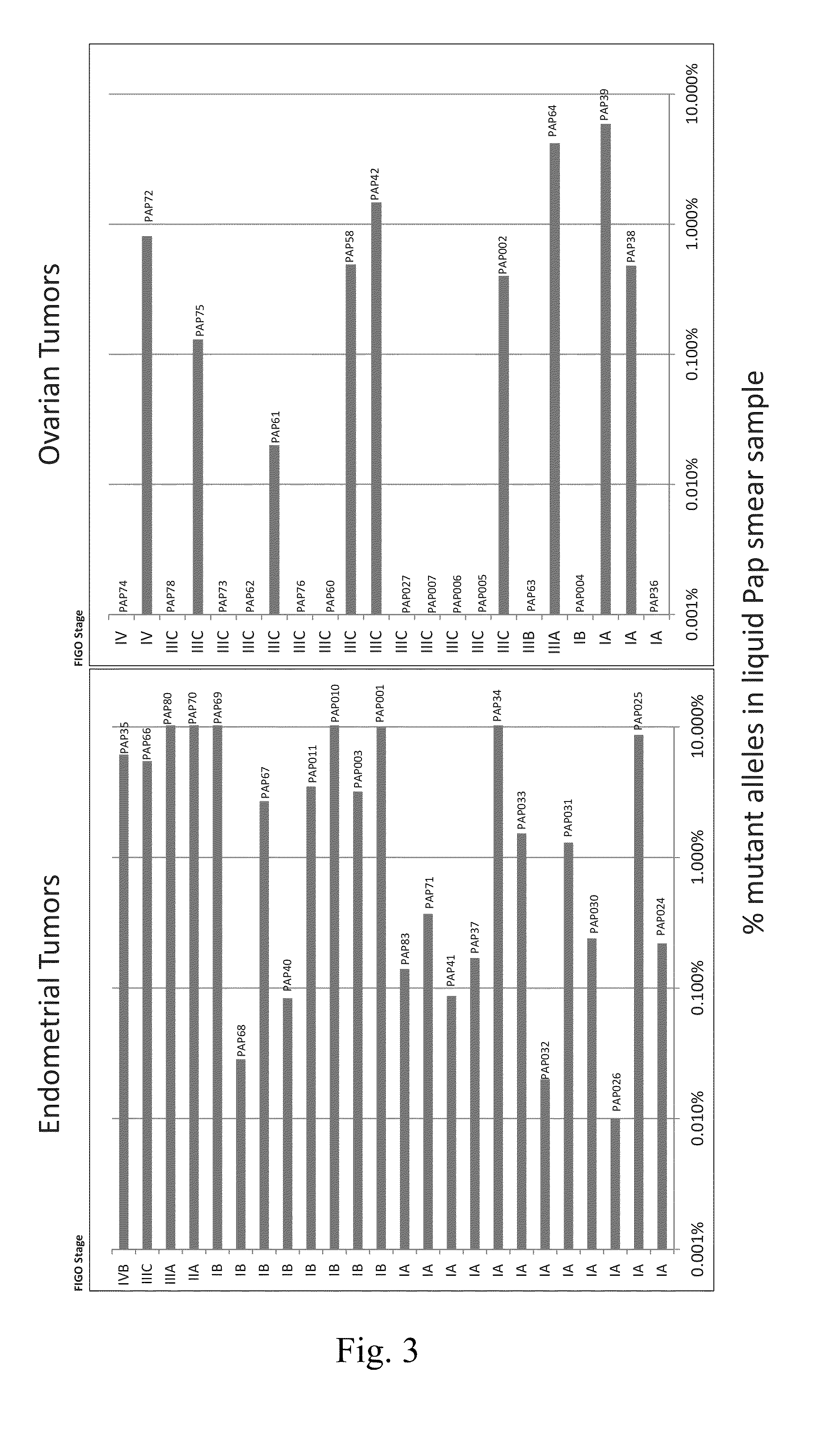Papanicolaou test for ovarian and endometrial cancers
a technology of endometrial cancer and papanicolaou, which is applied in the field of cancer screening, can solve the problems of thickening of the endometrium, more lethal latter, and insufficient specificity of endometrial thickness screening using tvs
- Summary
- Abstract
- Description
- Claims
- Application Information
AI Technical Summary
Benefits of technology
Problems solved by technology
Method used
Image
Examples
example 1
[0044]We reasoned that more sophisticated molecular methods might be able to detect the presence of cancer cells in endocervical specimens at higher sensitivities and specificities than possible with conventional methods. In particular, we hypothesized that somatic mutations characteristic of endometrial and ovarian cancers would be found in the DNA purified from routine liquid-based Pap smears (henceforth denoted as “Pap smears”; FIG. 1). Unlike cytologically abnormal cells, such oncogenic DNA mutations are specific, clonal markers of neoplasia that should be absent in non-neoplastic cells. However, we did not know if such DNA would indeed be present in endocervical specimens, and we did not know if they would be present in a sufficient amount to detect them. The experiments described here were carried out to test our hypothesis.
[0045]There were four components to this study: I. Determination of the somatic mutations typically present in endometrial and ovarian cancers; II. Identif...
example 2
Prevalence of Somatically Mutated Genes in Endometrial and Ovarian Cancers
[0046]There are five major histopathologic subtypes of ovarian cancers. The most prevalent subtype is high grade serous (60% of total), followed by endometrioid (15%), clear cell (10%), and low-grade serous carcinoma (8%) (Table 1). Genome-wide studies have identified the most commonly mutated genes among the most prevalent ovarian cancer subtypes (Table 2) (23-25).
[0047]Such comprehensive studies have not yet been reported for the endometrioid and mucinous subtypes, collectively representing ˜20% of ovarian cancer cases (Table 1). However, commonly mutated genes in the endometrioid and mucinous subtypes have been reported (26). In aggregate, the most commonly mutated gene in epithelial ovarian cancers was TP53, which was mutated in 69% of these cancers (Table 2). Other highly mutated genes included ARID1A, BRAF, CTNNB1, KRAS, PIK3CA, and PPP2R1A (Table 2).
[0048]Among endometrial cancers, the endometrioid subt...
example 3
Identification of Mutations in Tumor Tissues
[0053]We acquired tumors from 46 cancer patients in whom Pap smears were available. These included 24 patients with endometrial cancers and 22 with ovarian cancers; clinical and histopathologic features are listed in table S3.
[0054]Somatic mutations in the 46 tumors were identified through whole-exome sequencing as described above or through targeted sequencing of genes frequently mutated in the most common subtypes of ovarian or endometrial cancer (Table 2). Enrichment for these genes was achieved using a custom solid phase capture assay comprised of oligonucleotides (“capture probes”) complementary to a panel of gene regions of interest. For the oncogenes, we only targeted their commonly mutated exons, whereas we targeted the entire coding regions of the tumor suppressor genes.
[0055]Illumina DNA sequencing libraries were generated from tumors and their matched non-neoplastic tissues, then captured with the assay described above. Followin...
PUM
| Property | Measurement | Unit |
|---|---|---|
| volumes | aaaaa | aaaaa |
| pH | aaaaa | aaaaa |
| pH | aaaaa | aaaaa |
Abstract
Description
Claims
Application Information
 Login to View More
Login to View More - R&D
- Intellectual Property
- Life Sciences
- Materials
- Tech Scout
- Unparalleled Data Quality
- Higher Quality Content
- 60% Fewer Hallucinations
Browse by: Latest US Patents, China's latest patents, Technical Efficacy Thesaurus, Application Domain, Technology Topic, Popular Technical Reports.
© 2025 PatSnap. All rights reserved.Legal|Privacy policy|Modern Slavery Act Transparency Statement|Sitemap|About US| Contact US: help@patsnap.com



